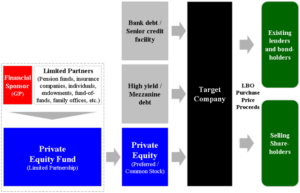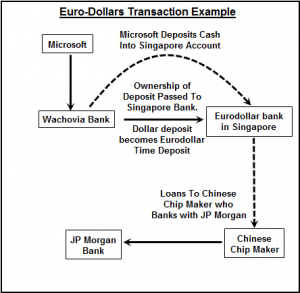Mike’s Thoughts on Regulations
I recently did this really awesome educational video for you on Bonds, but unfortunately I described the characteristics of bond mutual funds in layman terms without a bunch of disclosures, and approval from a higher up regulatory agency is required (come to find out).
So that got me thinking about rules and regulations. Should we have more or less, are they a cure-all panacea, and most importantly, what are the unintended consequences?
Click on the video below to hear my crazy thoughts on regulations. All right, they’re not really crazy, but I think the question of more or less is a hard one, and we shouldn’t “knee jerk” one way or another “just because”.
Hi there—Mike Brady with Generosity Wealth Management, a comprehensive, full-service wealth management headquartered right here in Boulder, Colorado.
Today, I want to talk about regulations—are they good, are they bad, should we have more, should we have less, and I’m going to tell you that I’m right in between. The most important thing is that it doesn’t solve everything. First off, before you think I’m some kind of a radical, you’ve got two extremes. This is 100% regulation, this is 0% regulation and I don’t think that anybody of sane mind is saying that we should have 100% regulation, that’s government ownership of everything, or is zero regulations. I don’t know what things were like before the 1929 crash, but I definitely know that, after that fact, there has always been some kind of regulation. It’s not necessarily a panacea. It doesn’t solve all your problems and I think that it’s good for us as investors, not to necessarily advocate for more or less, but just to understand that they have a place, but it just doesn’t solve everything and if you think it’s going to then I think you’re going to have a false sense of security, because something is probably going to happen in the future as well.
Let me tell you why I’m even bringing up today’s topic. I’ve probably done 100, maybe 150 of these particular videos over the last five years and the reason why I started doing the videos is I thought it was a great way, an additional way to communicate with clients and friends, maybe perspective clients. It’s a way for me to try to be as clear and concise as possible to share with you what I’m thinking and how I view things without having to pick up the phone and call every single person. That might be a very inefficient way to do it.
I also want it to be educational for you so if you’ve been watching a lot of my videos, you know that I talk about maybe a current topic, maybe a general topic, etcetera, because the way I view things is just because I do this all day, it’s not because I’m smarter than you, but maybe I’m on page five, maybe I’m on page six and because you don’t do this every day, maybe your education level in investments and financial planning is on a page two and so if I can help bring you up to page three or page four we can have a great conversation and I think you’re better off for it and I think I am as well.
Well, out of all those videos I recently did a video last week that was called All About those Bonds, and actually I don’t know if you ever that song, All About that Bass, all that Bass, well I called it All About those Bonds and I figured a couple people would get the joke, but it turned out to be a 16 to 17 minute video about bonds, so I talked about price, I talked about yield, I talked about what a bond is, how it works, premium, discount and in my opinion, it was a beautiful video. I was very proud of myself because I thought that I could refer back to it in coming months and coming years and say wow, you have a question about bonds. Just look at this particular video. Inside there, I talked about bond funds and I talked about the characteristics of bond funds, and so I was trying to talk, in layman’s terms, about the characteristics of them, whether they could lose money, make money and various situations like that and so for 30 seconds, I actually talked and warned about some things in bond funds, but because of that, I talked about the characteristics of bonds. A compliance department examiner doing absolutely her best job and that’s what she’s supposed to do, said Mike, this is actually you can’t talk about characteristics of bonds without FINRA approval. Now FINRA is one of the regulators. It’s a self-regulatory organization. It’s just one of the big regulators out there for broker-dealers. I’m like okay, how do I get FINRA approval. She’s like well you got to pay a certain amount of money. I think it was like $125 and it’s probably going to take five or six weeks and I’m like really, you got to be kidding me, so I just decided it wasn’t worth the hassle really, to go through all that delay and some of the requirements.
It’s not the $125, it’s actually the transcript, and it’s actually more involved than what I’ve led you to believe. So I basically decided it’s just not worth it for me to do it. Now the unintended consequence of that particular regulation is that what I feel is a great educational opportunity for clients is not going to be out there. A warning of some things that you should beware of as it relates to particular bonds, and I think that bonds have a place in a portfolio. I’m not going to lie to you, I think they’re a good place for most people in their portfolio and, of course, you have to personalize it to your individual situation.
Well, because of this particular regulation, that message isn’t getting out there. Look at prospectuses. Prospectuses—once again, I wasn’t around in the 1930’s and the 1940’s but the prospectus were probably very small. I’ve been doing this for 24 years. I started working with clients in 1991 and, at that point, the prospectuses were pretty fat. Over the years, my perception has been they get fatter and fatter and fatter because more and more either regulation or disclosure gets in there and to a certain degree, unfortunately, most people don’t read the prospectus. I highly encourage you to read the prospectus, okay, and I give out prospectuses to every client prior, or concurrent with an investment. However, the unintended consequence of some regulations has been to a certain point where it has now done, possibly, it just has not achieved its ultimate goal which is to inform the client. They’ve overinformed with so much information that you get nothing okay.
Back in 2008, there was a big discussion about too big to fail, that there were some various banks and institutions that were so big, that we shouldn’t have that. We shouldn’t have—people would say wait a second, we shouldn’t have to bail these things out and you shouldn’t be allowed to be too big to fail. Well, unfortunately, many of the regulations that come out work against the decentralization because every regulation has some kind of a cost associated with it and sometimes it’s hard to say what that actual cost is, but if it’s an extra sheet of paper that’s required, it’s an extra piece of documentation. I mean I have to tell you, I’ve gone through in the last 24 years, you have periodic audits and if I don’t have a folder with a label on it, even though it’s empty, I have to have that label and that folder, but if I don’t they’ll ding me.
So there’s a lot of bureaucratic type of things that add to the cost of doing business and the unintended consequence of some regulations are that it causes smaller operations, smaller businesses to just not be able to survive and be profitable and so they have to merge with larger ones and pretty soon you have, instead of five small ones, you might have two or three or maybe have one because they have to group together for the economy of scale. Now, I’m being very broad here and very general, but the most important thing is that regulations are not a cure-all for everything. Do I think we should have some regulations—absolutely, and I certainly hope you’re not getting from me that we should have no regulations, but I like to think of it as, even the prison system, I mean I think that there are some people who are a danger to society, they just are and it’s for the good of the community that they are put away and shielded from us and from harming us, but it’s very easy to say, well, I’m tough on crime so, therefore, the easy is let’s more people in prison. After decades of saying that, pretty soon we have a lot of people in prison and we have a huge amount of money going towards prison, because the easy answer was well, let’s just put him in prison. That’s the answer for everything.
Every time some kind of a crime happens, we need to be tougher on crime. Well, it’s the same way when something bad happens in the financial world. It’s like, well let’s throw more regulations on there because that’s kind of a kneejerk answer and in my response is, just so that you know where I stand is usually, well, let’s look at what we currently have and do they need to be modified? Are there some regulations that maybe need to be cut, that actually were an unintended consequence that led to that bad action and so it’s really more piling on, piling on, piling on.
That’s my video today. Really, the most important thing I want you to take away from this is that I think regulations are good and I’m glad that we have regulators. I truly believe that, but it is not an answer to everything and one of the unintended consequences at times of some regulations are unforeseen. That’s why they’re unintended, okay, they weren’t intended to begin with, but also sometimes the end investor is actually hurt and, in my case, I think the video that I did was wonderful and beautiful and, unfortunately, you’re never going to see it, but it was a good education I think for all my clients who see this particular video. If you want to know more about bonds, give me a call, because I’ll be able to do that for you in person and I think that over this next year, I’m going to make a commitment to at every meeting, really educating you on what’s the difference between price and yield, why is a 10-year Treasury important. Why has this been in the news all this time and where, in my portfolio speaking as you, where in a client’s portfolio, do bonds have a place? Do they have a big place, a little place, what is for you, so I’m going to now do it for you individually since doing it en masse didn’t work out for me. I’m looking forward to doing another video for you in a couple of weeks. I’m doing this on a Thursday afternoon so, hopefully, you’re getting it Thursday night, maybe Friday morning, because a consideration is oh, Mike, we’ll look at your stuff right away, so you can get your newsletter so anyway, I hope you have a great day. I hope you have a great weekend and you have a wonderful day. Thanks, bye bye.




